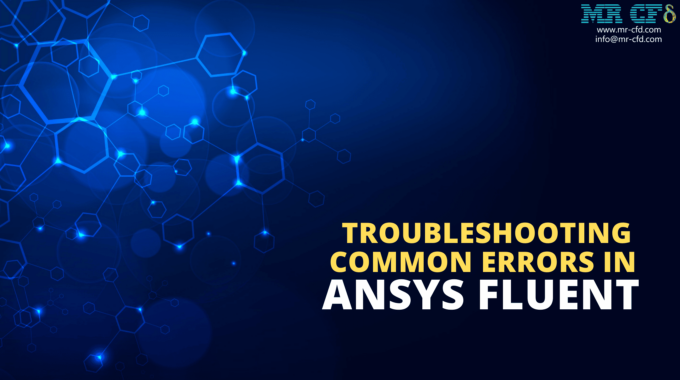
Troubleshooting Common Errors in ANSYS Fluent
Troubleshooting Common Errors in ANSYS Fluent
Running computational fluid dynamics (CFD) simulations in ANSYS Fluent can be a complex process, and it is not uncommon to encounter errors or issues along the way. In this article, we will discuss some common errors you may encounter when using ANSYS Fluent and provide some tips for troubleshooting.
- Non-converging simulations: One common issue you may encounter is a simulation that fails to converge. This means that the solver cannot find a solution that satisfies the governing equations of the problem. Possible causes of non-converging simulations include:
- Incorrect boundary conditions
- Poor quality mesh
- Inaccurate physical models
- Numerical instabilities
To troubleshoot non-converging simulations, try the following:
- Check your boundary conditions and make sure they are appropriate for your problem
- Refine your mesh to improve its quality
- Make sure you are using the appropriate physical models for your problem
- Try using a different solver or solver settings
- Diverging simulations: Another common issue is a simulation that diverges, meaning that the solution becomes unstable and grows without bounds. Possible causes of diverging simulations include:
- Incorrect boundary conditions
- Poor quality mesh
- Numerical instabilities
To troubleshoot diverging simulations, try the following:
- Check your boundary conditions and make sure they are appropriate for your problem
- Refine your mesh to improve its quality
- Try using a different solver or solver settings
- Unphysical results: Sometimes, you may get results from your simulation that seem unrealistic or unphysical. This could be due to several factors, such as:
- Incorrect boundary conditions
- Poor quality mesh
- Inaccurate physical models
To troubleshoot unphysical results, try the following:
- Check your boundary conditions and make sure they are appropriate for your problem
- Refine your mesh to improve its quality
- Make sure you are using the appropriate physical models for your problem
By following these troubleshooting tips, you should be able to resolve many common errors and issues that you may encounter when using ANSYS Fluent. However, if you are unable to resolve the problem, it may be helpful to seek advice from ANSYS Fluent support or other experts in the field.



This Post Has 0 Comments